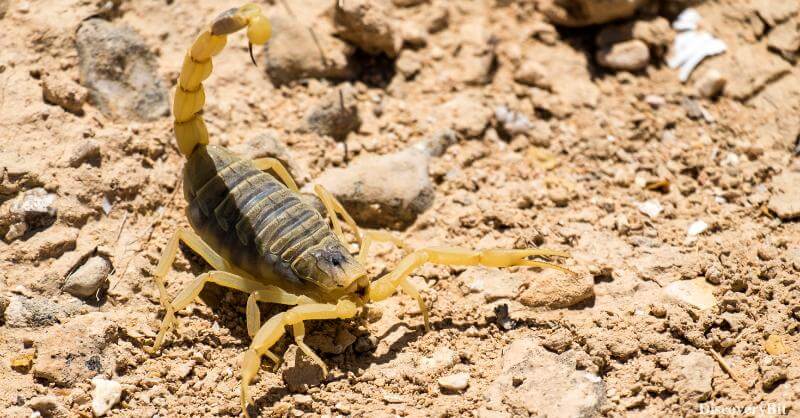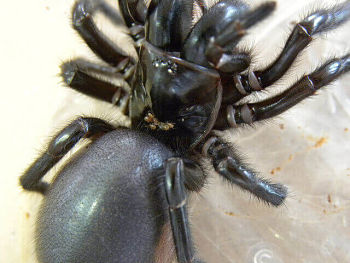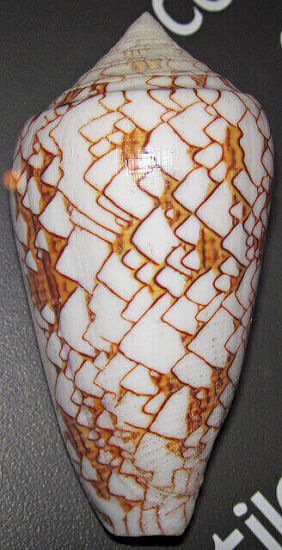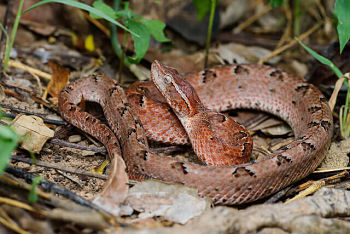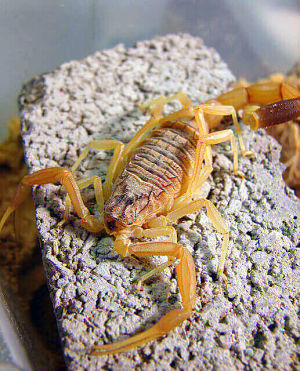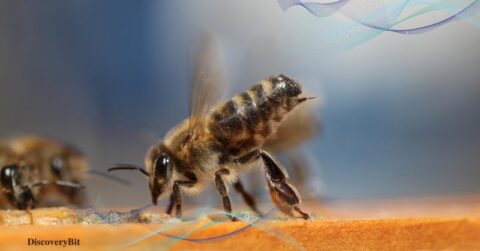Many people react differently to certain creepy venomous animals like spiders, scorpions, and snakes. Some run away from them, some scream in terror, and some stomp them in their place. While some hold their ground, even to the extent of playing with these deadly creatures. But the scary reactions to these creatures is to be expected given that they could be deadly when they attack or defend themselves against external aggressors.
But regardless of one’s view of these creatures, there are great benefits that could be gained from these venomous animals. And these benefits have to do with the medicinal use of their venom. I know, right! To some of us, this might be the last thing to cross one’s mind when one comes across, for example, a funnel-web spider.
While these venomous animals are dangerous and may seem creepy and unsettling, some people have been lucky enough to be saved by their venom; you know, the same venom that could also kill. Some venom, from these creatures, can be used to treat major diseases like cancer and even prevent brain damage due to stroke. This is all thanks to the work of brave scientists and researchers who were curious enough to experiment with the venoms from these animals.
This post will review 6 of these venomous animals, highlighting a few facts and some health benefits that are currently or are in the process of being advanced from the venoms produced from these creatures for saving human lives.
1) Australian Funnel Web Spider
Australia is full of creatures that can’t wait to get a taste of one’s flesh! Okay, maybe a little bit exaggerated as they’re not really waiting to pounce on one’s flesh unless provoked. But they would if the situation calls for a fight or self-defense.
One of these creatures that would defend itself when toyed with is the Australian funnel-web spider–aggressive and venomous animal. This is a spider that has been deemed by many as the world’s deadliest spider.
The Australian funnel-web is not an arachnid you want to mess with. Its venom can kill a human in as little as 15 minutes. Currently, there exist at least 40 different species of the spider. However, only one of those species is deemed truly deadly–the Sydney funnel-web spider (Atrax robustus). And this species of spider is black in color and has very skinny legs.
Some spiders usually blend in with their environment somewhat, but the funnel-web spider is so dark that it highly stands out from the environment. So, it is fortunate that they are easy to spot, unless, of course, you happen to slip a foot into a shoe conveniently housing one of them.
While it’s true that they’re deadly, their venom has been found to stop brain damage from occurring due to stroke. The Colossus, a huge funnel spider, is being milked for its venom as it is said to be a great source of anti-venom for the bites from deadly funnel spiders. More testing is being done to determine further reaches of the funnel spider ‘s venom.
2) Cone Snail
Yes, I will acknowledge that snails do not fall into the rank of something deadly and venomous unless it is the cone snail (genus Conus), a predatory sea creature. The name, cone, is gotten from the geometry of the shell, which is a cone in shape.
Most snails mean no harm and don’t possess any venom, but the cone snail would sting and administer its venom without warning. The large cone snails are considered more dangerous and toxic than the smaller ones, with venoms that could be fatal. The cone snail is considered one of the most venomous snails in the world.
if one were to come across a cone snail, it is best to stay clear of it because if bitten, one better prays that there is an anti-venom close by. This is because, as previously stated, these small marine creatures can deliver a dose of venom that will have one pushing daisies within minutes if help does not arrive fast. Regardless of how dangerous the venom may be, it still has very promising potentials for saving human lives.
The venom, according to scientists, has the potential to be beneficial to humans in lots of ways. The conopeptides could be used for therapeutic and pharmacological purposes because of their pain-relieving potential. Further studies are being done to develop unique ligands that could also be used for therapy and laboratory purposes.
3) Malayan Pit Viper
The Malayan pit viper is like the North American copperhead snakes. They prefer dry and flat areas. These snakes are also known as lazy snakes because they will not move even when a human is approaching.
They are considered one of the most venomous animals and dangerous, in addition to behaving unpredictably. That is, they are calm one minute, and the very next minute they could strike without warning. I would seriously recommend avoiding them because their venom could rot a finger or even the whole arm if one’s finger is bitten by the snake.
The venom from the pit viper can be used to treat a variety of medical issues such as heart attacks, high blood pressure, and even blood disorders. And this is by no means the limits to its potential as the snake venom can be used for a lot more medicinal needs.
After the first antivenom discovery by Albert Calmette in 1896, it wasn’t long before other people began making discoveries about snake venom, and what it can do with regards to saving human lives. To this day, experts continue to make progress with snake venom in hopes of creating more medical uses.
4) North American Copperhead
A lot of people believe that the copperhead, also a pit viper, is a highly venomous animal/snake. But after a little research, one will find that’s simply not true. To the contrary, copperheads, unlike the previously discussed Malayan pit viper, are one of the least venomous and deadly snakes.
Also, their hunting habits are quite different from those of other snakes. They ambush preys, which means they wait for their prey until the right time comes to attack. But just like the Malayan pit viper, the snake will stay still if it encounters a human, instead of slithering away. This and with the fact that they blend well with their environment make it easy for people to step on them. resulting in the high frequency of bites reported.
The venom from the snake is currently being studied because of contortrostatin, a protein that seems to be able to stop the growth of cancer cells as well as stop tumors from growing in other parts of the body.
This is yet another example of advances in medicine that seem to come from venomous creatures. One can’t help but be amazed at the advancements that scientists continue to make.
5) Scorpions
Scorpions, in general, are terrifying. Even their appearance seems menacing, and often enough to make humans stay away from them.
Not all scorpions are aggressive and deadly venomous animal, but some are. A couple of the deadly ones like the Deathstalker and the Arabian Fat-tailed scorpion, with their powerful toxic venoms, are able to kill humans or cause great pain. There is also a species of scorpion, the Spitting Thicktail Black Scorpion, that could spit just like the cobra. The toxic spray has been known to cause permanent blindness. I would generally recommend staying away from them especially if you have no idea about scorpions.
Currently, various researchers are trying to figure out what types of venomous animals can help with cancer. And as It turns out, scorpion venoms have been shown in certain instances to help shrink cancerous tumors and slow the growth rate. Venom from the Deathstalker Scorpion has been known to help properly highlight tumor cells for operations. The scorpion venom also has the potential to act as a cure for lupus and rheumatoid arthritis. There are studies that have also shown how effective the venom could be used in making effective pain-relieving drugs.
6) Bees
Bees are an important part of our world. They help pollinate plants with a trickle-down effect that allows humans to survive. In addition to pollinating plants and making food, bees are able to help us in many other ways as well, and in this regard, with their venom.
Contrary to popular belief, bees do have venom. When they sting, the venom is injected into the skin, which could be deadly for those who are allergic to a bee sting, and also painful to anyone stung. By the way, some bees die after one sting. Despite the negative perception of a bee sting/venom, there are many benefits that can be sourced from the bee venom.
One of these benefits is a form of therapy known as Bee Venom Therapy. Basically, people are stung with bees to relieve things like arthritis, asthma, eczema, Lyme disease, tumors to list these few. The bees venom helps build up an immunity, giving the person an overall better chance at recovering from various ailments. Bee venom has also been indicated to be capable of healing cancer cells.
Wow, a pretty terrifying and impressive bunch of venomous animals. With the advancement in science and technology, more information and health/medicinal uses are bound to be sourced from these and other toxic animal venoms. The future, from the health perspective, does really look bright.
References:
|Thailandsnakes.com |livescience.com | naturalhealth365.com | australiangeographic.com | mnn.com | listverse.com |
Tags: Australian Funnel Web Spider Bees Cone Snail Health Malayan Pit Viper Medicine most venomous animal most venomous animal in the world North American Copperhead poison Scorpions Toxic Venom venomous animals
